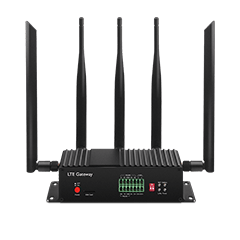Optimizing Industrial IoT Networks: How Gateways Enable Real-Time Data Processing
Optimizing Industrial IoT Networks: How Gateways Enable Real-Time Data Processing
Blog Article
Industrial IoT Gateways: Key Technologies for Seamless Machine-to-Cloud Integration
The Professional Net of Things (IIoT) is revolutionizing industries by enabling real-time monitoring, automation, and optimization of operations. In the middle of those transformations lies the iot gateway devices, a crucial unit that serves as a connection between industrial equipment and the cloud, or between disparate communication protocols. In this information, we examine how IoT gateways are transforming commercial operations, increasing effectiveness, and driving advancement across sectors.

1. The Position of IoT Gateways in Industrial Surroundings
An IoT gate way is basically a tool that connects different commercial devices and sensors to the web or other system infrastructures. It enables the collection, running, and transmission of knowledge from industrial gear to centralized programs or cloud platforms. Without these gateways, commercial products with different transmission standards would battle to talk with each other, restraining the capacity to power data-driven insights.
These gateways are crucial for ensuring seamless connection between heritage equipment (which might use older or exclusive protocols) and modern electronic techniques that rely on cloud computing, edge processing, and advanced analytics. That interoperability is essential for producing an attached, data-rich environment that promotes decision-making and functional efficiency.
2. Real-Time Data Collection and Checking
One of the principal features of IoT gateways is their power to gather real-time data from devices and devices across a commercial environment. That data contains sets from equipment performance metrics to environmental conditions. By constantly checking equipment, IoT gateways allow operators to track important variables like heat, stress, shake, and more.
3. Edge Computing and Data Running
In several industrial settings, control knowledge directly at the foundation (i.e., at the edge) is more efficient than sending every thing to a cloud server. Edge processing within IoT gateways enables that by letting data to be prepared locally, reducing latency and bandwidth usage. That is specially crucial in cases wherever quick decision-making is required, such as for example in critical programs wherever setbacks may cause inefficiencies or safety hazards.
4. Allowing Predictive Maintenance
One of the most impactful purposes of IoT gateways in commercial procedures is predictive maintenance. Through continuous monitoring and information evaluation, IoT gateways may recognize styles and defects in gear behavior which could indicate imminent failures. Rather than depending on planned preservation or waiting for gear to break up, corporations can do maintenance predicated on real-time knowledge, ensuring that products are repaired only once necessary.
5. Enhancing Detailed Performance
IoT gateways also play an important position in increasing overall functional efficiency. By giving centralized access to machine and process data, operators may obtain important insights into bottlenecks, inefficiencies, and parts for improvement. In manufacturing, for instance, IoT gateways can join generation lines, supply organizations, and inventory systems to produce a holistic view of operations.

Conclusion
In conclusion, IoT gateways really are a critical element in the digital transformation of commercial operations. By enabling real-time knowledge series, edge computing, predictive maintenance, and improved effectiveness, they help companies enhance efficiency, lower expenses, and improve safety. As industries continue steadily to evolve, IoT gateways will stay a cornerstone in producing better, more related, and more strong industrial environments. For companies looking to stay competitive in the electronic era, enjoying IoT gateways is a proper move toward unlocking the total potential of professional operations. Report this page